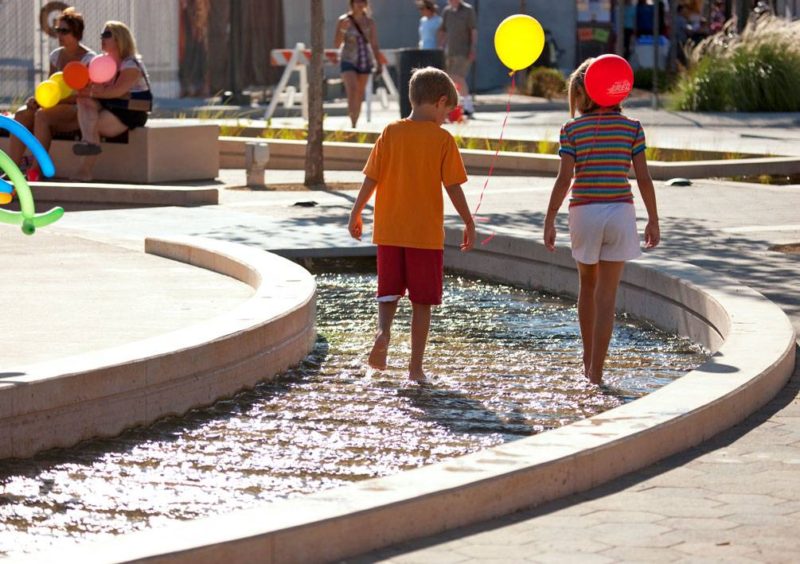Article by Selen ÖZTÜRK – A review of the World’s First Rose Museum by NEXT Architects in Daxing District, Beijing, China. In this museum, everything is coming up roses – literally. The world’s first rose museum opened on May 23, 2016, in Beijing, China, in conjunction with the 2016 World Federation of Rose Societies Convention. The convention is an international platform at which the host country and host city present their regional brands to visitors and federation members from other countries. The rose museum is a great place for visitors to enjoy art installations about flowers and learn historical theories about ancient roses. The project designers from NEXT Architects have successfully combined the history of China, Chinese culture, and modernity in a bouquet of roses.
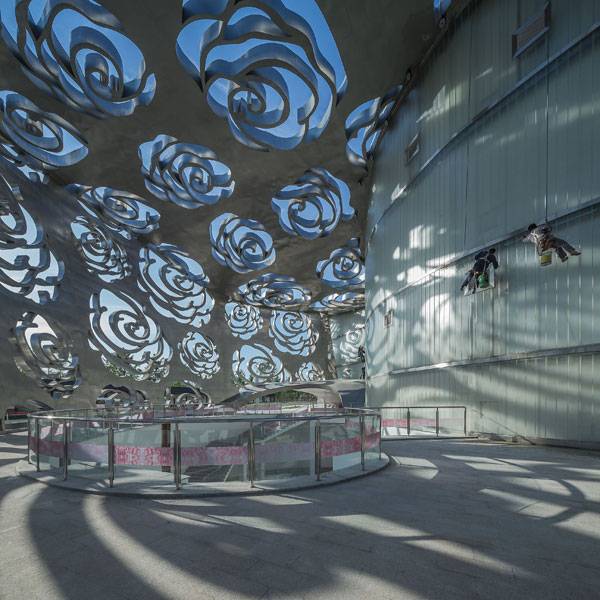
World’s First Rose Museum. Photo credit: Xiao Kaixiong
World’s First Rose Museum
Flowers in Chinese Culture
Flowers aren’t just flowers in China. They are part of the culture. Different flowers hold different meanings, and people communicate with one another by expressing their feelings through the cultural attributes of specific flowers. As we look into the culture in a deeper way, we can clearly distinguish the importance of flowers in people’s daily lives.
A Rosy History
Roses are one of China’s traditional flowers. They generally represent love, friendship, peace, eternal spring, and perpetuity. Due to the fact that roses originated in China, there are many ancient and precious rosaceae fossil remains. China has a long rose-breeding history that can be traced back to the early West Han Dynasty, about 2,000 years ago.

World’s First Rose Museum. Photo credit: Xiao Kaixiong
A Bouquet of Beauty
NEXT Architects designed the museum to look like a bouquet of roses. At first sight, the building looks like paper-cut patterns of Chinese roses. The soft stainless steel used to create spaces for the exhibition wraps around an area of 30,000 square meters and climbs 17 meters high. When you enter the building, the folded structure of the museum pulls you inside. “The rose museum aims to create a new architecture for China, in which history and modernity, art and architecture blend,” explains NEXT Architects’ China partner, Jiang Xiaofei.
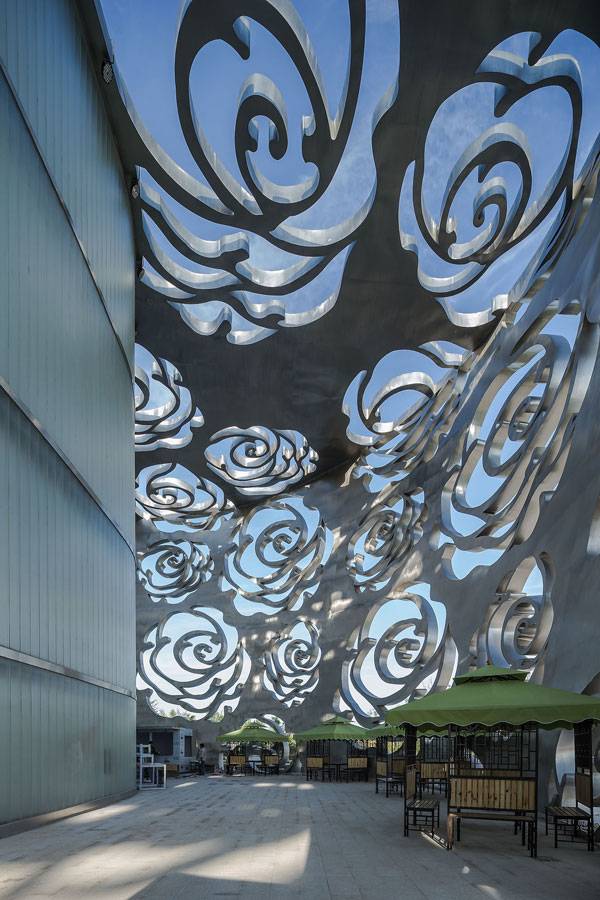
World’s First Rose Museum. Photo credit: Xiao Kaixiong
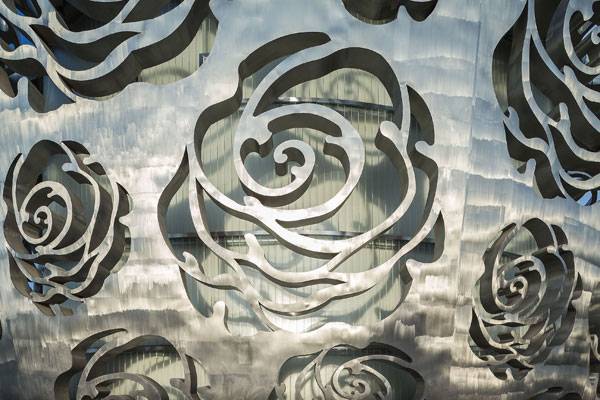
World’s First Rose Museum. Photo credit: Xiao Kaixiong
Linking History and Modernity
John Van de Water, partner at NEXT Architects, says “the main challenge with the rose museum was to find a modern Chinese identity for a building (whose) significance is so deeply rooted into Chinese culture.” The architects blended history and modernity by using walled courtyards in their design. A detached façade creates four walled-off courtyards between the façade and the museum itself. According to Chinese culture, such courtyards create the perfect balance among man, house, and nature. By using semi-transparent stainless steel walls, the architects blurred the boundaries between indoor and outdoor landscapes. Both in daylight and at night, Chinese rose paper-cut patterns create spectacular shadows.
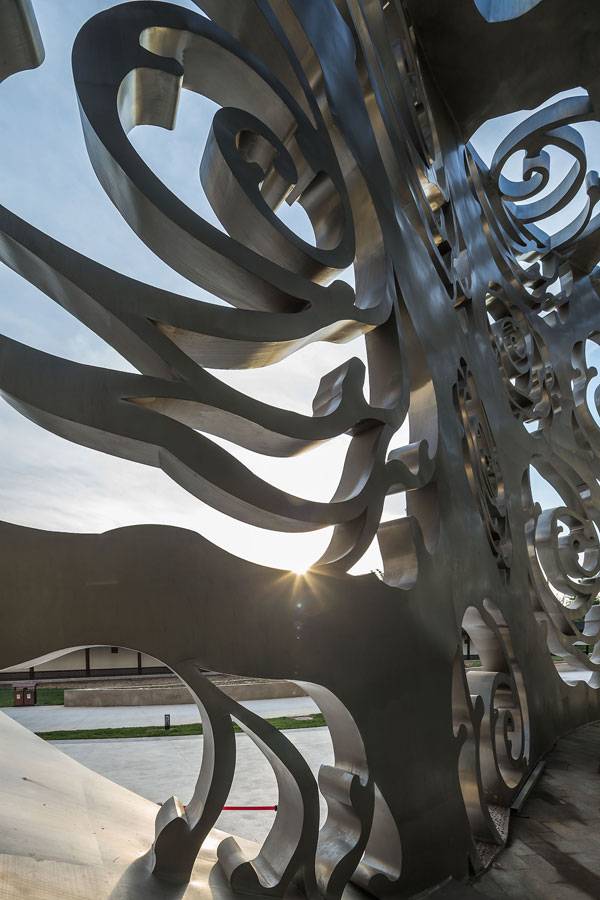
World’s First Rose Museum. Photo credit: Xiao Kaixiong
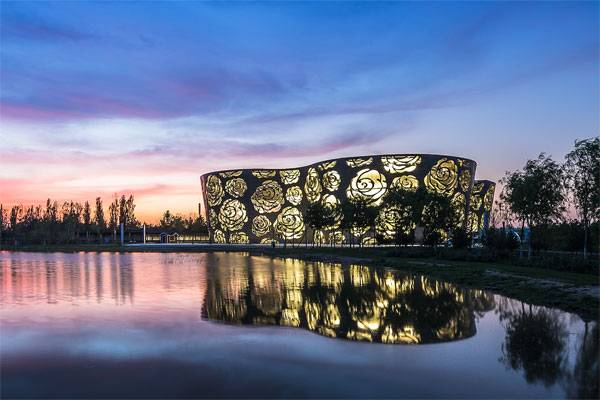
World’s First Rose Museum. Photo credit: Xiao Kaixiong
Full Project Credits For World’s First Rose Museum :
Project: World’s First Rose Museum Architect: NEXT Architects Location: Daxing District, Beijing, China Completion: 2016 Photographer: Xiao Kaixiong Client: Beijing Tianheng Building Design Consulting Co., Ltd. Recommended Reading:
- Becoming an Urban Planner: A Guide to Careers in Planning and Urban Design by Michael Bayer
- Sustainable Urbanism: Urban Design With Nature by Douglas Farrs
- eBooks by Landscape Architects Network
Article by Selen ÖZTÜRK
Published in Blog

